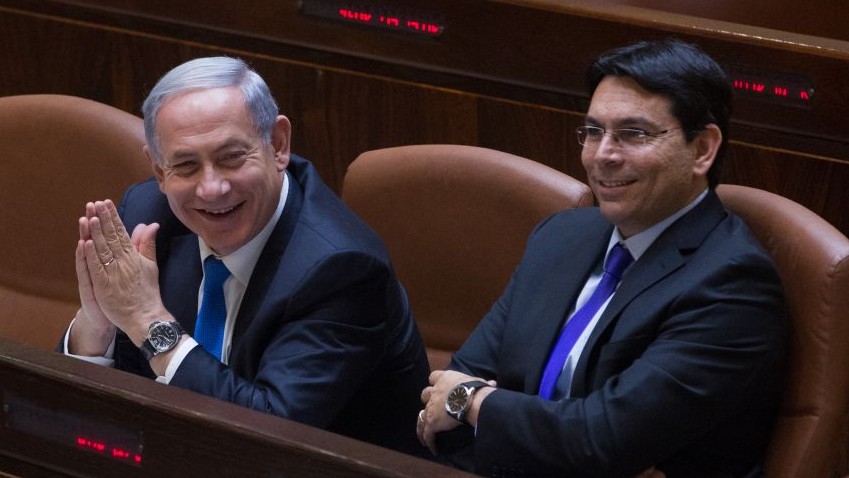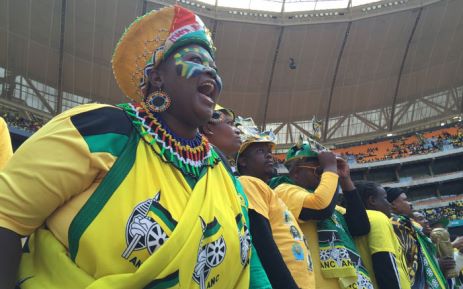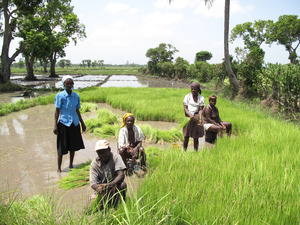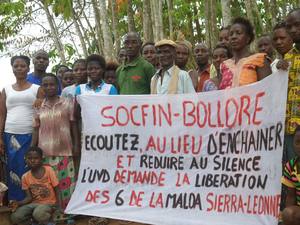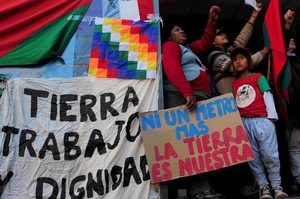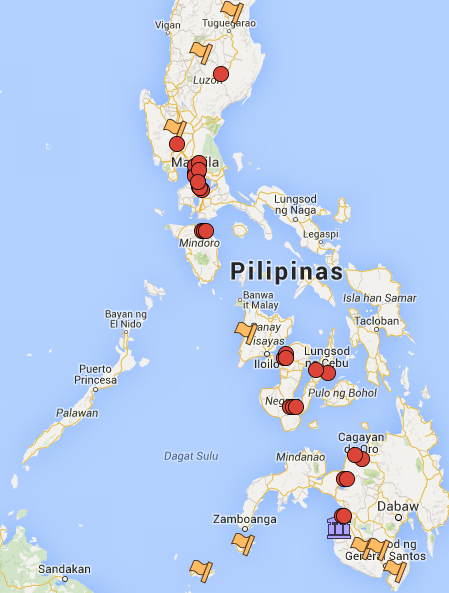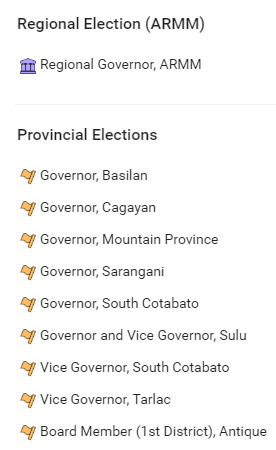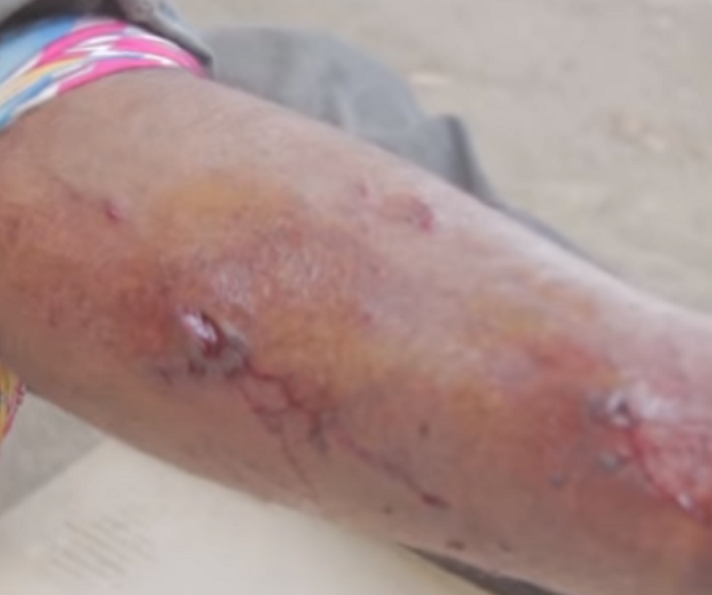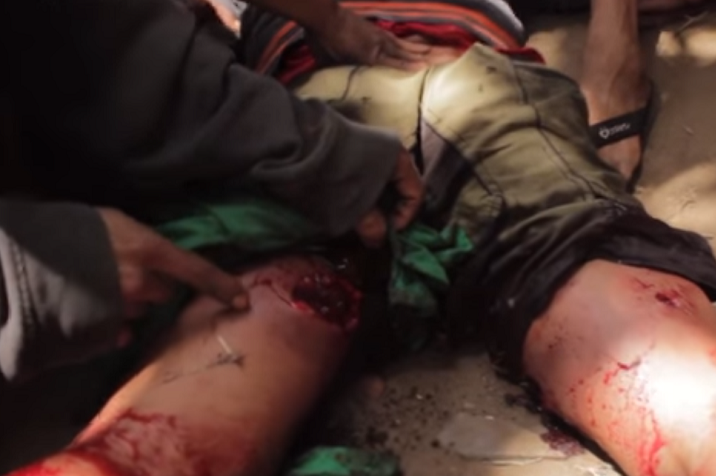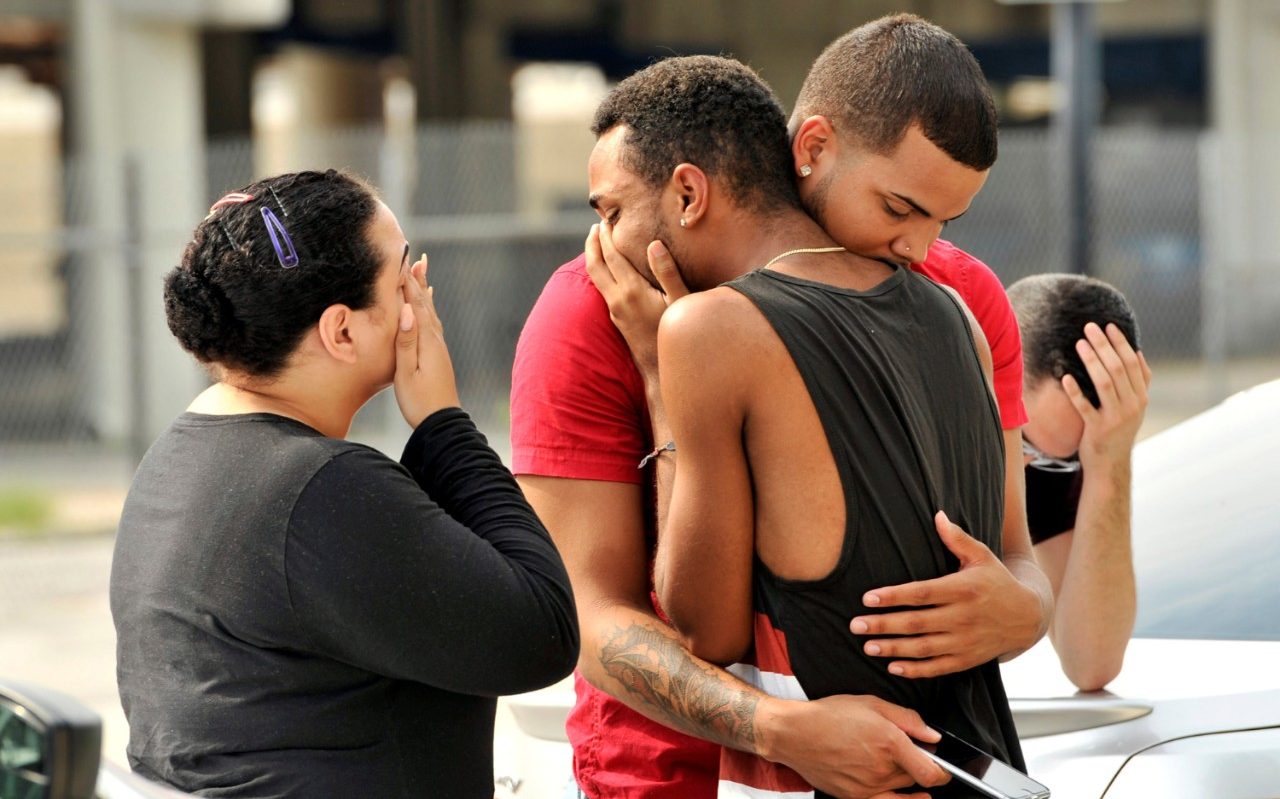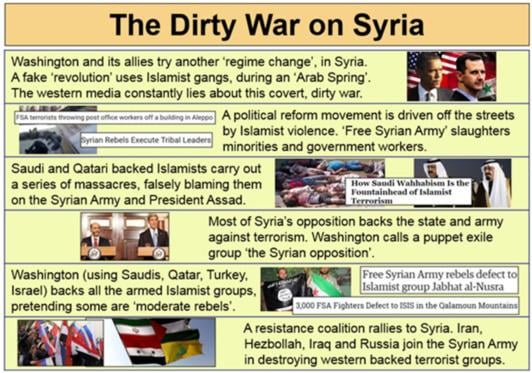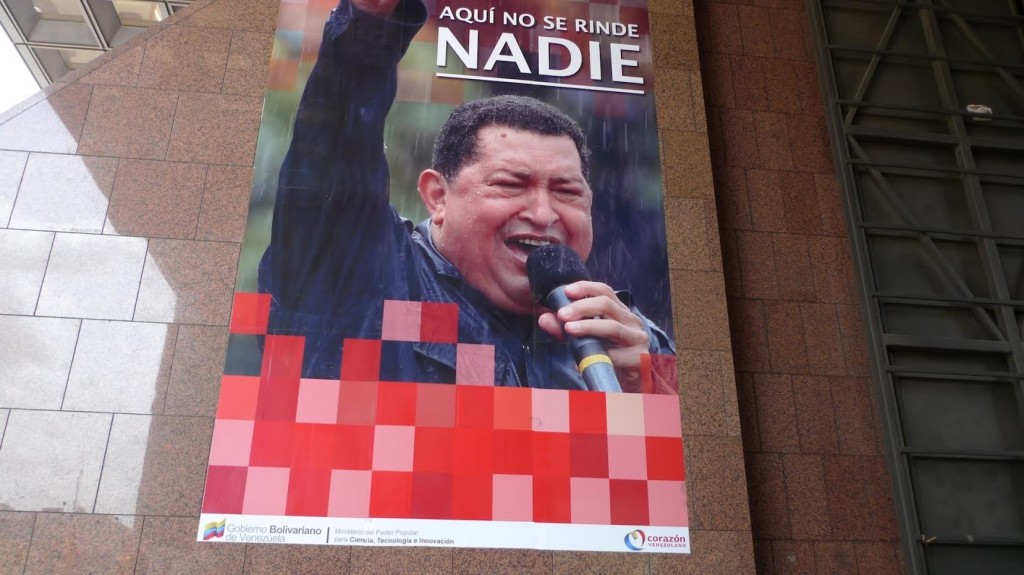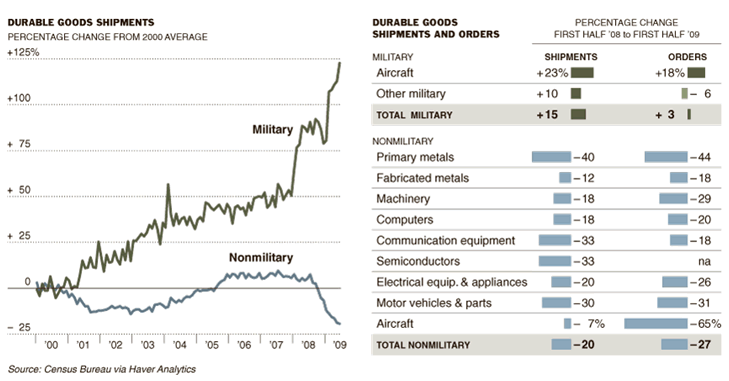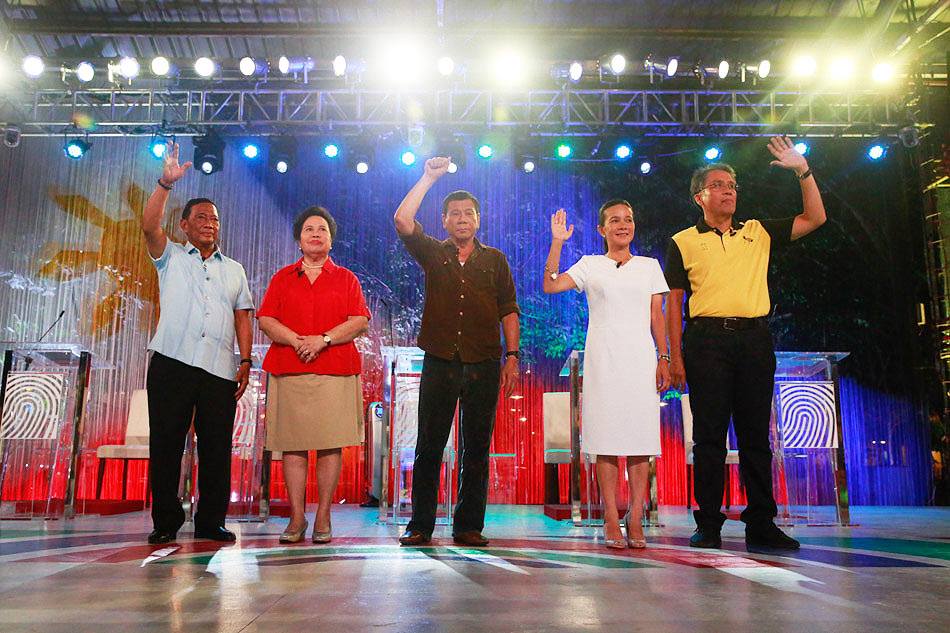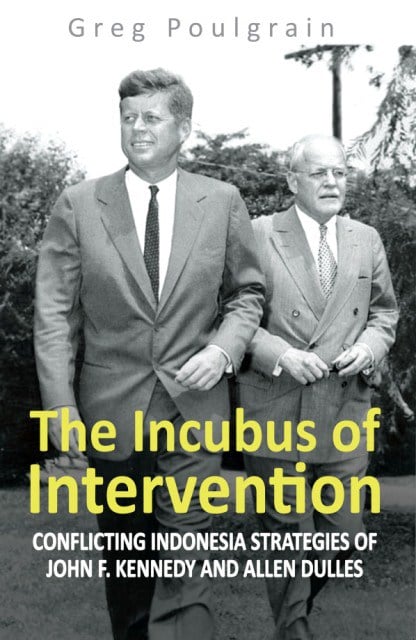Técnico del Olympique de Marsella durante la temporada 2014-2015, Marcelo Bielsa obsequió al campeonato de Francia el fútbol más bello de los últimos veinte años.
Marcelo Bielsa sólo se quedó un año a la cabeza del Olympique de Marsella (OM) pero marcó para siempre la historia del club. La proeza es aún más notable dado que no consiguió ningún título, contentándose con clasificar al equipo para la Liga Europa obteniendo el cuarto lugar al cabo del campeonato. No obstante el rosarino logró la unanimidad entre los hinchas del club más popular de Francia, quienes se identificaron con el estilo de juego propuesto y la personalidad del carismático entrenador argentino.
Llegada a Marsella
La llegada de Marcelo Bielsa a la cabeza del Olympique de Marsella tardó en concretarse. Erudito del fútbol, analista fino, perfeccionista hasta la obsesión, minucioso en los menores detalles, intransigente con los principios, trabajador incansable, el entrenador argentino deseaba tomar en cuenta todos los parámetros del club así como el potencial de los jugadores antes de dar su respuesta. Así, visionó varias veces todos los partidos del Marsella de las dos temporadas anteriores haciendo fichas técnicas de cada jugador. También asistió a varios partidos antes de dar su acuerdo definitivo.
La ciudad de Marsella sedujo a Marcelo Bielsa. Apreció particularmente el estadio Vélodrome: “Uno de los motivos por los cuales vine a trabajar aquí era para ver lleno, por lo menos una vez, el estadio Vélodrome. Es uno de los espectáculos más hermosos que pueda ofrecer el deporte.[1] […] Es un estadio único, muy bello. Vacío es majestuoso. Lleno es emocionante”.[2] Por su parte los habitantes de la ciudad más popular y exuberante de Francia sólo podían apreciar a un personaje con semejante carácter, apodado El Loco.
La oficialización de la firma del contrato suscitó la alegría de los aficionados, que le reservaron una calurosa acogida digna de los más grandes jugadores. En la historia del Olympique de Marsella ningún entrenador desató semejante pasión entre los hinchas. Samir Nasri, mediocampista de Manchester City formado en Marsella, se acuerda del entusiasmo extraordinario que generó la llegada del argentino: “Cuando llegó Bielsa parecía que hubiéramos fichado a Cristiano Ronaldo”.[3] Daniel Bravo, antiguo jugador del Marsella, también expresó su entusiasmo: “Un coach como él es la mejor cosa que le pueda suceder al OM”.[4] Carlos Valderrama, leyenda del fútbol colombiano que jugó varios años en el campeonato de Francia, se alegró de la llegada del técnico rosarino, “uno de los mejores entrenadores del mundo”.[5] Por su parte Jean-Michel Larqué, antiguo internacional francés, aclamó “la llegada de un crack”.[6]
Situación del club y plantilla
Marcela Bielsa encabezó un grupo que acababa de terminar la temporada 2013-2014 en un laborioso sexto lugar, con un total de 60 puntos. Con un balance de 16 victorias, 12 empates y 10 derrotas, el equipo había marcado 53 goles con 40 goles en contra, consiguiendo una modesta diferencia de goles de +13. Sin estilo de juego, los aficionados que aspiraba a ver un espectáculo más atractivo no tenían interés en ir al estadio.
El técnico argentino asumió entonces un plantel disminuido por una confianza mermada que salía de una temporada difícil. Pero Marcelo Bielsa también tuvo que enfrentar otro obstáculo de envergadura. Mientras que había elaborado una lista de doce jugadores que fichar, la presidencia del club no reclutó a… ninguno. “Yo propuse doce opciones y ninguna se pudo concretar. Yo pedí a Manquillo, a Isla, a Montoya, a Coke, a Ocampos, a Rekik, a Tello, a Medel, a Alerweireld y a Stambouli. Y de esos no vino ninguno”, señaló el coach argentino.[7] Peor aún, la dirección procedió a la venta de importantes jugadores de la plantilla tales como Mathieu Valbuena y Lucas Mendes, canceló los contratos de Benoît Cheyrou y Morgan Amalfitano y prestó a Jordan Ayew, sin ni siquiera dignarse a consultar al entrenador. La constatación de Bielsa fue contundente: “Me enteré de la venta de Mendes cuando faltó su primer día de entrenamiento por estar viajando a Catar. […] La dirección del club me engañó”.[8]
Valbuena se acuerda de este episodio y de su última conversación con Marcelo Bielsa, la víspera de su salida hacia el campeonato ruso: “Bielsa me dijo: “Quisiera que supieras que todos los que dicen que no formabas parte de mis planes son unos mentirosos. Fuiste el mejor jugador del equipo de Francia durante el Mundial. Estaría loco si no quisiera incluirte en mi grupo.’ Tuvo palabras gentiles conmigo y me deseó buena suerte”[9]. El internacional francés, obligado a marcharse a causa de una lógica económica que adoptó el club en detrimento del imperativo deportivo, lamentó no haber podido jugar bajo las órdenes del técnico argentino: “Me habría gustado trabajar con él. Es un gran entrenador con métodos que pueden parecer duros, pero bien vemos lo que aporta a los jugadores”.[10]
Por otra parte el club procedió al reclutamiento de cuatro jugadores (Michy Batshuayi, Romain Alessandrini, Abdelaziz Barrada y Matheus Doria) sin solicitar la opinión del rosarino. “Ninguno de los jugadores que llegaron al Olympique de Marsella fue una iniciativa mía”, recordó Bielsa. El caso de Doria es emblemático. En efecto, la presidencia decidió reclutarlo en los últimos momentos del mercado… contra la opinión del entrenador. El técnico se expresó al respecto: “Me opuse a la llegada de Doria. […] A mí analizar la llegada de un jugador me lleva veinte partidos […]. La decisión de sustituir a Mendes por Dorio no mejora el potencial del equipo. Sale sorpresivamente un jugador como Mendes que tenía dos años en el club, un año de titularidad, una ambientación y todo eso se pierde. […] Un jugador confirmado e instalado en el fútbol francés por una gran promesa de 19 años con todo el proceso que tiene por delante y con el agravante que yo no pude ni manifestarme […]. Fue el mismo presidente quien me dijo ‘No pensemos en futbolistas extranjeros porque no tenemos la estructura necesaria para evaluar futbolistas juegan fuera de la liga francesa”. El tiempo dio la razón a Bielsa. En efecto, Doria no jugó ni un solo minuto en el Olympique de Marsella y su préstamo al club español de Granada fue un fracaso completo.[11]
Apegado a los principios y a la palabra empeñada, Marcelo Bielsa expresó su descontento durante una memorable conferencia de prensa, fustigando el comportamiento de Vincent Labrune, Presidente del club, y lamentando las promesas no cumplidas. Cuando se firmó el contrato, el Olympique de Marsella prometió un plantel de 22 jugadores con dos jugadores por posición y una inversión mínima de 35 millones de euros para fortalecer al grupo.[12] El argentino sólo pudo constatar la diferencia entre las promesas hechas y la realidad: “[Debía] tener un grupo de 22 jugadores de nivel similar para tener emulación. […]. La cifra pasó luego de 22 a 20. Después comprendí que ni siquiera llegaríamos a 18. Y ahora apenas tenemos 16”.[13] Su conclusión fue contundente: “Ha finalizado el periodo que permite definir el plantel y las conclusiones son negativas. […] El presidente asumió conmigo compromisos que él sabía que no iba a cumplir cuando los tomó. Las realidades que me toca afrontar si me son planteadas sinceramente las acepto. En caso contrario me genera rebeldía”.[14]
Criticado por una parte de la prensa por expresar públicamente su descontento, una leyenda del fútbol tomó la defensa de Marcelo Bielsa. En efecto, Zinedine Zidane brindó su apoyo a su colega argentino: “¿Acaso yo habría reaccionado como Bielsa? Sí. Porque si elaboras ejes de trabajo y grandes líneas con tu presidente y que al final todo no se desarrolle como estaba previsto, obligatoriamente, estás en tu derecho de pedir explicaciones”.[15]
Así Marcelo Bielsa empezó la temporada con un plantel limitado y jugadores no elegidos. El obstáculo era entonces de primera magnitud y los observadores no dejaron de declarar su escepticismo en cuanto a las probabilidades de éxito del entrenador argentino con un grupo tan restringido. Eric Di Meco, antiguo jugador del club con el cual ganó la Champion’s en 1993, señaló los recursos limitados puestos a disposición del técnico: “Si tiene éxito con este plantel ¡Será un mago!”. Esta opinión se emitió antes de las salidas de Valbuena, Mendes, Amalfitano, Cheyrou y Ayew, las cuales debilitaron considerablemente al grupo.[16] Jean-Michel Larqué, ahora comentarista deportivo, también señaló el nivel de los jugadores puestos a disposición de Bielsa: “Si consigue resultados con Mendy, Lemina, Imbula, lo felicitaré. Pero hoy, con estos jugadores, tiene más probabilidades de fracasar que de triunfar”.[17] Daniel Riolo, el comentarista radial más popular de Francia, también declaró sus reservas: “¿Qué puede hacer con Dja Djédjé, Mendy? La mitad del equipo me parece muy débil y poco importa quién lo dirija”.[18] Fue entonces, en esas condiciones adversas, que el técnico argentino tuvo que cumplir su misión.
Juego ofensivo y fútbol total
A pesar de este hándicap demostrado, Marcelo Bielsa se refugió en el trabajo y fiel a su filosofía de juego y sus principios futbolísticos elaboró un equipo generoso y valiente con vocación ofensiva, que ejerce un pressing alto y constante, con líneas cerradas y transiciones defensa/ataque rápidas. El bello juego que propuso el Olympique de Marsella sedujo rápidamente a los amantes del fútbol. El primer partido oficial de la temporada 2014-2015 contra Bastia terminó con un espectacular resultado final de 3-3. Claude Makelele, antiguo internacional francés que ganó dos veces la Champion’s y jugó la final del Mundial 2006, entonces entrenador del equipo corso, declaró su admiración: “Nos tocó un entrenador muy bueno que supo elaborar un sistema que nos causó muchos problemas”. Makelele lanzó luego una advertencia: “Marsella va a causar problemas a muchos equipos”.[19]
Acertó el técnico del Bastia. Tras una derrota contra Montpellier, el equipo de Marcelo Bielsa realizó una serie de ocho victorias consecutivas y gracias a su fútbol “heroico” encabezó el campeonato de Francia hasta la tregua invernal, dominando incluso al poderoso Paris-Saint-Germain catarí con sus innumerables estrellas. El Olympique de Marsella ocupó el primer lugar durante catorce jornadas. Ningún otro equipo permaneció tanto tiempo a la cabeza de la clasificación, ni Lyon, ni el Paris-Saint-Germain. Más allá de estos espectaculares resultados, el rendimiento colectivo y la belleza del juego del equipo de Bielsa impresionaron al mundo del fútbol, como lo ilustran numerosos testimonios.
Christophe Dugarry, antiguo jugador del Olympique de Marsella, ganador del Mundial y de la Eurocopa, aclamó el rendimiento extraordinario el técnico argentino a pesar de un plantel limitado: “Lo que hace Bielsa es tan impactante a la escala de la Liga 1 que puede suscitar vocaciones, pues, si miramos bien, tiene buenos jugadores pero ¿cuántos con nivel internacional? Tres, quizás cuatro. Lo que selecciono de la primera mitad del campeonato es el OM de Bielsa. No sólo por los resultados. […] Nunca he visto a un entrenador dejar su impronta en el equipo de modo tan rápido. Es apasionante porque es casi un caso de manual: cómo, con un equipo similar, un puedo hacerlo jugar de modo tan distinto y con un rendimiento ampliamente superior”.[20]
Zinedine Zidane, impresionado por el trabajo de Marcelo Bielsa, decidió realizar su práctica de observación en Marsella. Su testimonio es instructivo: “Bielsa es un apasionado. Es alguien que llega a las 8 de la mañana y se va a las 8 de la noche. Se pasa todo el día en jogging. Es un hombre que adora lo que hace, que es meticuloso. Eso lo notamos”.[21]
Laurent Blanc, antiguo internacional francés que ganó el Mundial y la Eurocopa y entrenador del Paris-Saint-Germain con el cual realizó dos cuádruples consecutivos (Campeonato, Copa de Francia, Copa de la Liga y Trofeo de los Campeones), resultó seducido por el estilo de juego que propuso Marcelo Bielsa. Se expresó al respecto y declaró su admiración por su colega: “Es un técnico que propone juego y ello sólo me puede gustar.[22] […] Lo que me gusta de él es que tiene ideas y no las reniega […] Pienso que su método puede adaptarse a la Liga 1 y yo quisiera que se quedara.[23] Es un entrenador muy bueno con carácter fuerte. Tuvo resultados con Bilbao y tiene resultados con Marsella. Lo felicito”.[24]
Willy Sagnol, entrenador de Burdeos que realizó una brillante carrera de futbolista, resultó encantado por el técnico argentino, de quien alaba las virtudes: “Uno sólo puede sentir admiración por lo que trae a Francia pues ningún otro entrenador lo había hecho antes de él. Como jugador y amante del fútbol, le digo gracias”.[25]
Hubert Fournier, entrenador de Lyon, también aclamó el trabajo de Bielsa a la cabeza del Olympique de Marsella: “Transformó al equipo. Es el principal responsable de la recuperación deportiva. También hubo una responsabilización individual de los jugadores claves del plantel como Gignac. Trajo rigor y voluntad de poner a trabajar a todos”.[26]
Daniel Casanova, entrenador de Toulouse, también rindió homenaje al rosarino, alabando su propuesta futbolística generosa y la transformación del grupo: “Este equipo no se parece para nada a lo que era el OM los últimos dos años. Es un equipo que tiene principios y que domina muy bien tácticamente todos los partidos. Este equipo está preparado para ir lejos con todos los ingredientes necesarios. Todos los jugadores admiten y entienden el rigor y la disciplina que exige el entrenador”.[27] También declaró su respeto por su homólogo suramericano: “Lo sigo desde hace mucho tiempo. Es alguien que ha sabido imponer un estilo agradable y eficiente en todos los lugares donde ha estado, con una metodología muy distinta a la que se suele usar. Siempre le he tenido aprecio sin conocerlo personalmente. Es un técnico que tiene ideas y que conoce muy bien el fútbol. Es capaz de sacar lo mejor de su equipo, de darle un estilo y de tener resultados”. Casanova lo considera un modelo: “Trato de inspirarme de los buenos y él forma parte de ellos. Me identifico con muchos de sus principios, con sus ideas, con el juego que quiere que practique su equipo. La posesión del balón, la reacción cuando se pierde la pelota, el pressing alto: ello forma parte de mi filosofía de entrenador y del juego que quiero practicar.[28] Pienso que es un gran entrenador que tiene mucha influencia sobre los jóvenes entrenadores como nosotros. Hay mucho que aprender del funcionamiento de sus equipos”.[29]
Robert Herbin, leyenda del AS Saint-Etienne que ganó cuatro campeonatos como entrenador, enalteció a su colega argentino Bielsa y alabó su trabajo: “Marcelo Bielsa está transformando profundamente al Marsella, un equipo irregular que había caído en la monotonía. Es un entrenador exigente y riguroso. El OM se compromete cabalmente en todos los partidos. Con los mismos jugadores que el año anterior, el cambio es bastante extraordinario. Bielsa coloca al colectivo encima de todo. Transformó a once jugadores en un equipo”.[30]
René Girard, entrenador de Lille y miembro del cuerpo técnico de la selección francesa que ganó la Eurocopa 2000, expresó su opinión sobre el argentino: “Bielsa es una gran figura del fútbol. Es una persona que conoce bien el fútbol y saca lo máximo de su equipo. Es una visión distinta del fútbol. El OM es líder y realiza un campeonato admirable”.[31]
Raymond Domenech, seleccionador del equipo de Francia finalista del Mundial 2006, también alabó la obra de su colega suramericano: “El trabajo que está haciendo, sobre todo en Marsella, es bueno, por sus resultados. Tiene un método muy claro y exige mucho a sus jugadores. Tuve la suerte de asistir a los entrenamientos con mi formación de técnico. Es alguien que pasa mucho tiempo con sus jugadores, hace mucho trabajo individualizado y pienso que es un método bueno […]. Si vemos lo que hace con el mismo plantel que el año pasado, es algo extraordinario. Es admirable”.[32]
Didier Deschamps, exjugador y entrenador del Olympique de Marsella y actual técnico de la selección francesa, destacó la acción del rosarino: “Si el OM ocupa ese rango es porque se lo merece […]. El OM tiene un gran entrenador y obviamente ello influye en el comportamiento del equipo y en los resultados. […] Actualmente los resultados dan toda la razón a Bielsa”.[33]
Por su parte Eric Gerets, exentrenador del Marsella muy popular entre los hinchas, expresó su admiración por su homólogo argentino: “Bielsa tiene un nombre fantástico en el fútbol. He leído y oído comentarios sobre él, de Guardiola por ejemplo o de otros. Todos dicen que es una persona extraordinaria”.[34]
Guy Roux, mítico entrenador francés que tiene el record de partidos dirigidos en el campeonato de Francia, expresó su admiración por Marcelo Bielsa: “Este equipo desarrolla por ahora un juego excepcionalmente bueno. Y único, porque ningún otro juega como él y no sólo a nivel del ritmo, sino sobre todo en la elaboración de la recuperación. Los marselleses son irresistibles. […] Bielsa demuestra grandes cualidades profesionales”.[35]
Bernard Lacombe, antiguo entrenador de Lyon y actual asesor de su presidente Jean-Michel Aulas, destacó la obra del técnico argentino a la cabeza del Olympique de Marsella: “Lo descubrí cuando entrenaba al Bilbao. Bielsa es una gran figura. Lo criticaron mucho al inicio, pero siguió con sus ideas y no las abandonó. Hizo un trabajo enorme en todos los clubes donde estuvo. […] Es la persona más influyente del club”.[36]
Rudy García, entrenador del AS Roma, se alegró de la llegada de Bielsa en el campeonato de Francia: “Estoy muy feliz de ver lo que hace en Marsella, gracias a todas sus ideas, sus convicciones, sus principios”.[37]
Albert Cartier, técnico del FC Metz, aplaudió la visión del fútbol de Marcelo Bielsa y el aire nuevo que trajo al campeonato de Francia: “Los verdaderos competidores se reconocen en Bielsa. Criticaron al señor Ancelotti, y digo ‘señor’ para expresar mi respeto. Para el señor Bielsa es lo mismo. ¡Son personas que ayudan al fútbol! Bielsa va a marcar a los jugadores del OM como Ancelotti marcó a los del PSG. Son dos entrenadores que aman apasionadamente su profesión. Regalan felicidad a la gente, a los espectadores”.[38]
Frédéric Antonetti, antiguo técnico de Rennes, es un gran admirador de Marcelo Bielsa. Expresó su opinión: “Adoro al entrenador del OM, su comunicación y sus principios. Es atípico y tiene mucho que dar al fútbol francés. Lo vimos contra París. Acepta que su equipo esté desequilibrado. Y este desequilibrio engendra hermosos partidos. Que tenga resultados con esta visión del fútbol es algo sumamente positivo para nuestro campeonato”.[39]
Jean-Pierre Papin, elegido jugador del siglo del Olympique de Marsella y ganador del Balón de Oro, destacó el aporte del técnico argentino y militó a favor de su mantenimiento a la cabeza de equipo: “Trajo algo especial. Tener a semejante entrenador en nuestro campeonato es un privilegio. […] Hay que conservarlo”.[40]
Carlos Mozer, defensor emblemático del club en los años 1990, se alegró de la llegada del técnico de Rosario a la ciudad sureña: “Espero que Marcelo Bielsa se quede el año próximo porque a él se deben los progresos. Tiene una buena mentalidad y quiere un equipo concentrado, agresivo y ofensivo. Me gustaría que permitiera al Marsella subir más alto”.[41]
Eric di Meco, otra figura legendaria del club, no pudo contener su admiración frente al “juego vertical, rápido en la transición y siempre dispuesto a ir hacia el campo del rival”. Incluso confesó lo siguiente: “Cuando veo los ataques de los dos laterales, a veces me digo ‘¡Cuánto me habría gustado jugar bajo sus órdenes!’”.[42]
Enzo Francescoli, leyenda uruguaya que hizo la gloria de Marsella en los años 1990, se mostró elogioso con el argentino: “Bielsa es un grandísimo entrenador, muy querido en Argentina. Hablamos muchas veces de él con el técnico de River, Marcelo Gallardo. Jugó con la selección argentina y estuvo bajo las órdenes de Bielsa. Guarda buenos recuerdos. Es un entrenador que ama el juego y que es ofensivo. Hizo grandes cosas en Argentina. Francamente, es una buena cosa que esté dirigiendo el OM”.[43]
David Trezeguet, exinternacional francés de origen argentino, campeón del mundo y de Europa, expresó su entusiasmo hacia su compatriota de quien alabó “el trabajo extraordinario […] con un equipo y recursos incomparablemente inferiores a los del PSG, Mónaco y Lyon”, enfatizando el mérito del rosarino. “Su juego suscita la alegría [y] el público lo adora porque es un apasionado”, apuntó.[44]
Opinión de los jugadores del Paris-Saint-Germain
Los jugadores del principal club rival, el Paris-Saint-Germain, observaron con mucho interés el trabajo de Marcelo Bielsa, particularmente Silva, Maxwell, Pastore, Matuidi y Aurier. Thiago Silva, capitán del PSG, se mostró impresionado por la transformación del equipo: “Marsella tiene los mismos jugadores que el año pasado. Pero el coach ha construido un equipo muy fuerte. Pienso que ha dado mucha confianza a los jugadores”.[45]
Maxwell también destacó el aporte del rosarino: “Yo sabía que era el hombre idóneo para cambiar la intensidad de juego de Marsella. Lo demuestra cada semana. Físicamente el OM está muy fuerte ahora, diferente del año anterior. Bielsa trabaja mucho y desarrolla una táctica particular. Siempre es difícil jugar contra sus equipos. Cuando vemos los partidos de los marselleses, sea en la intensidad, en la agresividad, ya no son los mismos”.[46]
El argentino Javier Pastore compartió este punto de vista: “Es un gran entrenador. Hizo cosas buenas en todos los equipos que dirigió. Todos mejoraron con él. Y es el caso con Marsella. Va a ser muy difícil vencer al OM este año”. Reconoció su influencia en el campeonato de Francia: “La Liga 1 no lo olvidará de pronto”. Pastore también expresó su consideración hacia su compatriota: “Es una persona muy famosa y muy respetada. Tiene verdaderos valores e hizo un trabajo excelente en todos los clubes y en todas las selecciones que dirigió. Desafortunadamente nunca me entrenó […]. Sé que es alguien que trabaja mucho, con una precisión por el detalle. Es un verdadero especialista. Personalmente, yo admiro a Marcelo Bielsa”.[47]
El mediocampista Blaise Matuidi también destacó la labor de Bielsa: “Hace un buen trabajo. Con su método logró cambiar a los jugadores. Veo ahora a marselleses que ha recobrado la plenitud de su talento”.[48]
El lateral Serge Aurier también se mostró impresionado por el OM de Bielsa: “Siempre he dicho que era el equipo que había que seguir atentamente este año. Es un equipo que juega, juega y juega, con jugadores que multiplican los esfuerzos y que practican un fútbol hermoso. Lo vimos contra nosotros. Ganamos el partido 2-0 pero tuvieron mucho mérito con todas las situaciones de gol que se crearon. Sigue siendo un equipo fuerte y hay que tomarlo en serio”.[49]
Unanimidad en torno al fútbol de Marcelo Bielsa
Hasta Frédéric Thiriez, Presidente de la Liga Profesional de Fútbol, no pudo dejar de expresar su admiración hacia el argentino, olvidándose del tradicional deber de reserva que exige el cargo: “¡Bielsa es el talento y el genio en estado puro! Es genial que el OM ocupe el primer rango”.[50]
Gérard Gili, exjugador y famoso entrenador del Olympique de Marsella bajo la era de Bernard Tapie, resume bastante bien el impacto de Bielsa en la ciudad sureña: “él, apenas en tres meses, ha logrado formar parte de la historia del club”.[51]
La belleza del juego que propuso Marcelo Bielsa, los resultados y su personalidad incluso sedujeron al mundo político. Patrick Mennuci, diputado de las Bouches-du-Rhône, brindó un testimonio sobre el prestigio del entrenador argentino: “Recién estuvo en Tindouf, Argelia, en el fondo del desierto, para una visita oficial. La gente me habló de Bielsa, del OM. También me hablan de él en la Asamblea Nacional”.[52]
El expresidente francés Nicolas Sarkozy, gran aficionado de fútbol e hincha declarado del Paris-Saint-Germain, fue seducido por el juego propuesto por Marsella. Destacó el trabajo de Marcelo Bielsa: “Me gusta mucho el OM. Vi el magnífico partido contra Lyon. Hubo 1-0 gracias a un gol fabuloso de Gourcuff pero el resultado final podría haber sido 2-0 para el OM. Bielsa, como entrenador, trae un toque de originalidad”.[53]
Italia incluso recompensó con un premio especial a Marcelo Bielsa por su “fútbol innovador” durante la ceremonia de “Banquillo de Oro” encargada de coronar al mejor entrenador de campeonato italiano.[54] Del mismo modo la UEFA designó al argentino como mejor entrenador del campeonato de Francia para el año 2014-2015 y explicó los motivos: “A Bielsa se le quiere o no. Nosotros lo queremos y nos gusta todo. La heladera, el respeto de los árbitros, el jogging, el café, el café en el jogging, la exigencia hacia los jugadores, la personalidad, la despreocupación del equipo campeón de invierno, todo […] En una palabra, ¡Bielsa no se va!”.[55]
Balance deportivo
Durante los primeros seis meses de la temporada, el Olympique de Marsella de Marcelo Bielsa practicó el fútbol más bello de Europa e hizo honor al deporte más popular del mundo. El argentino logró demostrar que era posible rivalizar con los más grandes, a pesar de un plantel limitado en cantidad y calidad, adoptando un estilo de juego ofensivo basado en la generosidad, la solidaridad y el espíritu de sacrificio. Gracias a su personalidad y su capacidad de convicción, el rosarino logró infundir una confianza extraordinaria a jugadores que salían de una temporada mediocre, colmando de alegría y orgullo a los hinchas del club.
A nivel de los resultados, el OM de Bielsa consiguió 21 victorias, 6 empates y sufrió 11 derrotas, con un total de 69 puntos y una clasificación al cuarto puesto. El equipo marcó un total de 76 goles y encajó 42, o sea una diferencia de goles de +34. El Olympique de Marsella no había marcado tantos goles en una temporada desde el año 1971-1972, o sea más de cuarenta años. Incluso durante la época gloriosa de Bernard Tapie, en los años 1990, cuando el club tenía uno de los mejores planteles de Europa y dominaba el campeonato de Francia, el equipo no había alcanzado semejante número de goles. En la historia del Olympique de Marsella, sólo las temporadas 1947-1949 y 1970 y 1972 resultaron más prolíficas.[56]
A nivel individual, el delantero André-Pierre Gignac terminó la temporada con un total de 21 goles, con sólo dos penales, clasificando segundo detrás de Alexandre Lacazette de Lyon que marcó 27 goles (con ocho penales). Por su parte, el mediocampista Dimitri Payet realizó un total de 16 pases, terminando la temporada como mejor pasador del campeonato. Ambos enfatizaron el aporte decisivo de Marcelo Bielsa en su rendimiento[57].
No obstante la clasificación final no refleja el rendimiento del Olympique de Marsella de Marcelo Bielsa. Dos factores distorsionaron el campeonato: el arbitraje y la Copa de África de Naciones.
Arbitraje
Marcelo Bielsa siempre adoptó una actitud respetuosa hacia el cuerpo arbitral, negándose a comentar las decisiones y los eventuales errores de apreciación de éste. Pascal Garibian, director técnico nacional del arbitraje francés, destacó este comportamiento y lo citó como ejemplo: “Es importante que un coach como él transmita el mensaje. Ello permite a los jugadores y a los árbitros estar mucho más serenos y a los jugadores tomar conciencia de que es inútil enfocarse en las decisiones arbitrales, incluso equivocadas”.[58]
No obstante, esta actitud noble hacia el cuerpo arbitral no premunió al Olympique de Marsella contra las decisiones litigiosas. En efecto, el equipo de Marcelo Bielsa fue víctima de al menos nueve errores flagrantes de arbitraje –entre ellos siete contra Lyon y el PSG que terminaron el campeonato respectivamente en el primer y segundo puestos– que costaron sin duda el título de Campeón de Francia a Marcelo Bielsa[59].
Las primeras decisiones discutibles se remontan al 26 de octubre de 2014 y al partido Lyon-Marsella. En el minuto 27 el defensor lionés Henri Bedimo agarró por la cintura a Florian Thauvin en el área de penalti. El penal era evidente. Pero el árbitro no tomó la decisión correcta y siguió el juego. En el minuto 78 Thauvin es otra vez víctima de una falta en la misma zona por parte de Samuel Umtiti. De nuevo el penal era flagrante. Pero el árbitro se negó a rendir justicia. El partido terminó con una victoria de Lyon 1-0 y Marsella perdió injustamente tres puntos cruciales.
El 9 de noviembre de 2014 se celebró la primera confrontación entre el Paris-Saint-Germain y el OM. Mientras que el PSG ganaba 1-0, el árbitro expulsó a Giannelli Imbula, en duelo con un jugador parisino, por una falta inexistente, perjudicando el equipo sureño. Tras el partido Clément Turpin reconoció su error y la Comisión de Disciplina canceló posteriormente la tarjeta roja. No obstante, esta decisión privó al OM de la posibilidad de empatar cuando el rival sólo ganaba por un margen mínimo. El partido terminó finalmente con una victoria 2-0 del PSG.
El 22 de febrero de 2015, el OM se enfrentaba a Saint-Etienne en el estadio Geoffroy Guichard. El equipo de Marcelo Bielsa ganaba 2-1. Mientras que se perfilaba la victoria, en los últimos instantes del partido el jugador marsellés Romain Alessandrini fue atropellado violentamente en su zona de penal por Théofile Catherine durante una fase defensiva. En vez de señalar la falta, el árbitro dejó que siguiera el juego y el rival aprovechó la ocasión para empatar, privando al OM de dos puntos preciosos.
El 15 de marzo de 2015 otra vez el arbitraje se mostró desfavorable a Marsella durante el partido contra Lyon. En el minuto 80, Lucas Ocampos marcó un gol evidente. Pero el árbitro estimó que el balón no pasó la línea mientras que las imágenes televisivas mostraban lo contrario. En el siguiente minuto Benoît Bastien decidió expulsar al defensor marsellés Jérémy Morel por una falta inexistente, como lo ilustró otra vez el video. Al final Marsella empató y perdió a uno de sus mejores defensores para el siguiente partido. Esos dos errores acumulados costaron de nuevo dos puntos al OM.
El 5 de abril de 2015, durante el partido contra el PSG, mientras que el resultado era de 3-2 a favor del club de la capital, el defensor parisino Marquinhos desvió con la mano el tiro de André-Pierre Gignac. La falta era flagrante pero el árbitro se negó a conceder el penal. Al final de partido André Ayew expresó su exasperación por los múltiples errores que perjudican a su equipo: “Estamos hartos de eso”. Ruddy Buquet decidió expulsarlo privando a Marcelo Bielsa de un jugador importante para el próximo encuentro crucial contra Bordeaux. Se le quitó injustamente un punto al OM.
El siguiente partido contra Bordeaux, el 12 de abril de 2015, sin la presencia de André Ayew, no estuvo exento de errores de arbitraje. Al contrario, se multiplicaron. En el minuto 45, Alessandrini fue víctima de una falta en el área de penal pero el árbitro se negó a tomar la decisión correcta. En el segundo tiempo, un defensor bordelés desvió con el brazo un cabezazo de Gignac. Otra vez el árbitro se negó a sancionar la falta con un penal evidente. El partido terminó con una victoria 1-0 para Bordeaux y privó a Marsella de tres puntos merecidos.
Según los observadores ningún otro club del pelotón de cabeza sufrió tanto las decisiones arbitrales erróneas durante la temporada 2014-2015. Eric Carrière, antiguo internacional francés y hoy comentarista, señaló los múltiples errores del cuerpo arbitral y destacó la actitud del entrenador marsellés: “Hay que ser digno en la victoria y en la derrota, como Marcelo Bielsa después de Lyon por ejemplo”.[60]
Incluso el periodista Pierre Ménès, uno de los grandes detractores de Marcelo Bielsa en Francia, se disgustó del arbitraje desfavorable al Olympique de Marsella. “Cada partido o casi sufre de un error de arbitraje […]. Mis respetos a Marcelo Bielsa por su reacción tras el partido [OM-Lyon]. Mucha clase e inteligencia”.[61]
Así, el equipo de Marcelo Bielsa fue privado de un total de 11 puntos a causa de las decisiones equivocadas del cuerpo arbitral. En vez de terminar la temporada en el cuarto puesto con un total de 69 puntos, Marsella debería haber terminado con 80 puntos en el segundo puesto, con sólo dos puntos menos que el PSG coronado campeón de Francia. Y ello sin tomar en cuenta el impacto negativo de la Copa de África de Naciones.
Copa de África de Naciones
Otro factor perjudicó al Olympique de Marsella en la carrera hacia el título. Con un plantel limitado a causa de las promesas no cumplidas de la presidencia del Club, el equipo fue disminuido considerablemente con la Copa de África de Naciones que privó a Marcelo Bielsa de dos titulares indiscutibles: el mediocampista André Ayew y el defensor Nicolas Nkoulou.
Durante su ausencia, el OM multiplicó los resultados negativos con una derrota en Montpellier 2-1, una derrota en Niza 2-1 y un empate en Rennes 1-1. A ello se agregó la larga ausencia de Nicolas Nkoulou tras una operación en la rodilla izquierda en febrero de 2015, cuando regresó de la CAN. Durante du convalecencia Marsella perdió puntos contra Reims (2-2), Saint-Etienne (2-2), París (2-3) y Bordeaux (1-0). Marcelo Bielsa recordó la importancia de Nkoulou en el dispositivo del OM: “Es un futbolista necesario por la jerarquía individual, por el rendimiento que tuvo durante todos los partidos que jugó. Es uno de los dos o tres mejores rendimientos del equipo. Por supuesto contar con él es una ventaja”.[62]
No cabe la menor duda de que el rendimiento defensivo habría sido mejor si Lucas Mendes no hubiera sido transferido o si uno de los defensores deseados por Marcelo Bielsa (Medel, Rekik, Isla, Jara, Alderweireld…) hubiera integrado el plantel. Del mismo modo, la conservación de Mathieu Valbuena o el fichaje de un jugador ofensivo reclamado por el técnico argentino, habría permitido compensar la ausencia de André Ayew.
Impacto de Marcelo Bielsa sobre las finanzas del club
Marcelo Bielsa, por su filosofía de juego y su personalidad, contribuyó al prestigio del Olympique de Marsella en Francia, Europa y en el mundo. El técnico argentino fue la figura deportiva más mediatizada de Francia. Según un estudio realizado por el gabinete Kantarsport, el rosarino se benefició de una presencia mediática superior a la de Zlatan Ibrahimovic, la estrella del Paris-Saint-Germain.[63]
Bernard Lama, exportero del PSG e internacional francés que ganó el Mundial 1998, evocó la influencia de Marcelo Bielsa, la cual contribuyó ampliamente a extender el renombre del club: “En el OM sólo hay una estrella, es el entrenador. Su personalidad lo aplasta todo”.[64]
Así Marcelo Bielsa, gracias al juego propuesto, atrajo a los canales televisivos como Canal+ y Be in Sport, que difundieron los partidos. Ello le permitió al club conseguir derechos audiovisuales a la altura de 43 millones de euros, estableciendo un récord histórico, mientras que el argentino dirigía un equipo con buenos jugadores pero sin estrellas. Sólo el PSG, con sus innumerables figuras, consiguió más ingresos con 45,5 millones de euros, o sea apenas dos millones más que el OM.[65]
Además la belleza del juego llenó de felicidad a los hinchas, quienes ocuparon masivamente el estadio Vélodrome. Durante todo el año, casi todos los partidos se jugaron con el estadio lleno, lo que permitió al Olympique de Marsella conseguir ingresos superiores a 30 millones de euros, una suma dos veces superior a la de la temporada anterior.[66] A nivel de comercialización de productos, la buena temporada que realizó Marcelo Bielsa permitió al club prorrogar su alianza con Intersport para el año 2015-2016 con un contrato superior. Jacky Rihouet, Presidente ejecutivo del grupo, aceptó aportar “una contribución más importante”, dado el nuevo prestigio del club.[67]
Por otra parte el trabajo de Marcelo Bielsa permitió valorar a numerosos elementos del grupo que fueron cedidos a precios importantes, lo que permitió al club conseguir notables plusvalías. Así, Giannelli Imbula vio su valor multiplicarse por tres en el espacio de un año. Dimitri Payet fue cedido por el doble de su precio de adquisición. Ambos fueron vendidos por una suma global cercana a los 40 millones de euros, llenando las cuentas del Olympique de Marsella. Del mismo modo muchos jugadores como Gignac, Ayew, Morel o Fanni, realizaron la mejor temporada de su carrera bajo las órdenes del argentino, lo que les permitió firmar importantes contratos con clubes atraídos por su rendimiento. Otros, como Mario Lemina, integraron prestigiosas instituciones tales como la Juventus de Torino. Todos, tanto el club como los jugadores, tienen una deuda de gratitud hacia el rosarino como lo ilustran los siguientes testimonios.
Testimonios de los jugadores
Muchos de los jugadores que trabajaron a las órdenes del técnico argentino le rindieron un vibrante homenaje. Todos declararon que Marcelo Bielsa había cambiado su visión del fútbol y les había permitido realizar fulgurantes progresos. Varios de ellos pudieron participar en grandes campeonatos y ser fichados por clubes prestigiosos.
Florian Thauvin, mediocampista transferido a Inglaterra, expresó su gratitud a Marcelo Bielsa: “Es una persona que me enseñó mucho en el fútbol […]. Confió en mí y me titularizó en cada partido. Me enseñó una cultura diferente. Trabajábamos muchísimo con él y es una cosa que no se hace mucho en Francia. Ahora estoy en otro país y me doy cuenta de ello. Quiero darle las gracias por todo cuanto hizo”.[68]
Mario Lemina, joven mediocampista, realizó una gran temporada bajo las órdenes del rosarino, al punto de suscitar el interés de la Juventus de Torino, club con el mejor palmarés de Italia, que decidió hacer la adquisición. Lemina reconoció que sin su mentor argentino nunca habría podido aspirar a semejante carrera: “Bielsa me mejoró muchísimo, sobre todo a nivel mental. Me llevó a mis límites y ello me ayuda mucho ahora”.[69] No dejó de expresar su gratitud: “Ser entrenado por Marcelo Bielsa me permitió realizar progresos. Un coach que vive por el fútbol como él es único. Quiero decir gracias mil veces”.[70]
André-Pierre Gignac, que volvió a la selección francesa gracias a Marcelo Bielsa, es consciente de su influencia: “Lo que viví en un año con Marcelo Bielsa nunca lo había experimentado en mi carrera. Sus métodos, su manera de hablar con nosotros, sus videos. Era muy enriquecedor. Realicé muchos progresos gracias a él e incluso para mí que soy delantero, aprendí mucho en términos de pressing, de reposicionamiento defensivo. También mejoré mucho mi juego de cabeza. Era casi una transformación”.[71]
Los jóvenes jugadores como Bill Tuiloma fueron los grandes beneficiarios de la llegada de Marcelo Bielsa a Marsella. En efecto, el técnico argentino dispone de la capacidad de sacar lo mejor de cada elemento. El internacional neozelandés, que dio sus primeros pasos en el equipo primero con Bielsa, expresó su gratitud hacia el entrenador: “Marcelo Bielsa organizaba muy buenas sesiones de entrenamiento gracias a las cuales pude mejorar mi juego. Es un coach increíble que conoce muy bien el fútbol. Jugué dos partidos de Liga 1 con él y estoy muy orgulloso de ello. Es un entrenador único en el mundo. No hay dos como él”.[72]
Gaël Adonian, quien dio también sus primeros pasos con Bielsa, guarda buenos recuerdos de su entrenador: “Hizo cosas buenísimas con el OM. Los hinchas no se han olvidado de él. Bien vemos las banderolas a su efigie. Dejó una buena imagen para el club a nivel del juego. No vaciló en solicitar a los jóvenes y ello siempre es positivo”.[73]
Michy Batshuayi, joven delantero belga seleccionado para la Eurocopa 2016, también se expresó sobre Marcelo Bielsa. Reconoció haber realizado progresos fulgurantes gracias a él: “El periodo en que más aprendí en mi vida fue el año que pasé con Bielsa. Aprendí a dominar mejor mis carreras. Con Bielsa, aprendí a ser más agresivo, más concentrado y más profesional”.[74]
Jérémy Morel, defensor lateral, recordó la epopeya marsellesa y tejió elogios a su antiguo entrenador: “Bielsa se atrevió a ponerme en defensa central […]. Producíamos juego y era el éxtasis en la cancha”.[75]
Giannelli Imbula, mediocampista en Inglaterra, expresó su gratitud hacia el argentino: “¿Bielsa? Es el mejor entrenador que he tenido. Es un entrenador que puede aportar a muchos clubes”.[76]
El testimonio de Dimitri Payet, cuya progresión con Marcelo Bielsa le permitió convertirse en un elemento clave de la selección francesa, es edificante: “La temporada con Marcelo Bielsa me hizo crecer como hombre y como jugador. Me dio bases importantes que me sirven todavía. Es un entrenador que fue clave para mí”.[77] El jugador es consciente de que superó una etapa: “En una temporada me enseñó muchísimo. Me posicionó como número 10 y me dio la regularidad que me hacía falta. Después de todo eso sólo lo puedo agradecer […]. Gracias a él pienso que he realizado la mejor temporada de mi carrera. Fue la primera vez que se me exigió tanto y que me mostré tan decisivo”.[78] La influencia del entrenador argentino era tan importante que Payet había condicionado su porvenir al de su técnico: “Formo parte de los jugadores que han aprendido mucho con Marcelo Bielsa. Lo que me dio en una temporada sé que me va a servir hasta el final de mi carrera pero también en toda mi vida. Me dio una lección de fútbol y también una lección humana. Humanamente es un personaje fuera de lo común. Cuando trabajas con él eres otra persona, no cabe la menor duda”.[79]
Tras una temporada 2015-2016 caótica, el defensor central Nicolas Nkoulou no dejó de expresar su nostalgia de Bielsa. Recordó la época en que Marsella proponía un bello espectáculo a toda Europa: “Nos divertíamos mucho. Nos generaba placer. Teníamos mucha seguridad y estábamos acostumbrados a trabajar juntos”.[80]
Steve Mandanda, capitán emblemático del OM, compartió la nostalgia de su compañero y recordó con orgullo la temporada pasada bajo las órdenes de Marcelo Bielsa: “El partido que más me marcó, quizás porque fue uno de los primeros en el Vélodrome, con un ambiente extraordinario, fue el que jugamos contra Saint-Etienne. Ganamos 2-1 pero en el primer tiempo, jugamos un fútbol magnífico. Durante el primer gol realizamos una acción increíble”.[81]
El mediocampista Alexis Romao se acuerda de la confianza que insufló el técnico argentino entre los jugadores, lo que les permitía abordar los partidos con mucha ambición. Recordó con nostalgia esa época: “Con Bielsa, cuando entrábamos en la cancha, sabíamos que íbamos a ganar”.[82]
Conclusión
A pesar de un plantel limitado y no elegido del cual importantes elementos (Valbuena, Lucas Mendes) fueron cedidos durante el mercado sin el consentimiento del entrenador, a pesar de las tensiones inherentes a la falta de lealtad por parte de la dirección del club hacia el técnico con promesas de contratación de jugadores no cumplidas, a pesar de las ausencias debidas a la Copa de África de Naciones no compensadas, a pesar de un arbitraje singularmente desfavorable al Olympique de Marsella, a pesar de las lesiones de jugadores claves, Marcelo Bielsa logró colocar el club en el centro de debate futbolístico gracias al extraordinario juego ofensivo propuesto a todos los amantes de la pelota.
Conviene plantear algunas preguntas para poner en su justo valor la obra del rosarino a la cabeza del OM. ¿Qué clasificación habría conseguido el equipo si Vincent Labrune hubiera cumplido sus promesas e invertido 35 millones de euros para componer un plantel de 22 jugadores profesionales? ¿Cuál habría sido el rendimiento del grupo si el club hubiera fichado a sólo tres jugadores de la lista de Bielsa? ¿Qué nivel habría alcanzado el plantel en términos de resultados y clasificación si se hubiera beneficiado de un arbitraje normal? Indudablemente, Marcelo Biela habría podido luchar hasta los últimos instantes para el título de campeón de Francia.
Ningún otro actor del fútbol tocó tanto el corazón de los marselleses, ni Basile Boli que marcó el gol victorioso de la final de Champion’s en 1993, ni Jean-Pierre Papin, elegido Jugador del Siglo, ni Didier Drogba y su fabulosa epopeya en la copa UEFA en 2004. Para entender el fervor que suscitó Marcelo Bielsa, resulta importante considerar su comportamiento basado en un compromiso total con su pasión por el fútbol, una rectitud moral y una ética a toda prueba en un mundo pervertido por el dinero y la hipocresía. Así, más allá de sus innegables competencias profesionales, destacadas por el mundo del fútbol, son su lealtad a los principios, su anticonformismo y sus virtudes humanos los que inspiran el respeto y el cariño de los hinchas.
Salim Lamrani
[11]Daily Motion, « Bielsa règle ses comptes avec Labrune: l’intégralité de la conférence de presse », op. cit.
[14]Daily Motion, « Bielsa règle ses comptes avec Labrune: l’intégralité de la conférence de presse », op. cit.
[29]20 minutes, « OM-Toulouse: ‘Les Marseillais sautent sur vous’, analyse Alain Casanova », op. cit.

